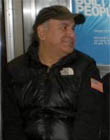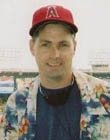|
|
This topic comprises 5 pages: 1 2 3 4 5
|
|
Author
|
Topic: Film sound - history and technical details
|
|
|
|
|
|
|
|
|
Ken Lackner
Phenomenal Film Handler

Posts: 1907
From: Atlanta, GA, USA
Registered: Sep 2001
|
 posted 07-15-2004 11:21 PM
posted 07-15-2004 11:21 PM




I've been doing some research to try to answer a question I've had for a while, and I can't seem to find an answer. From Dolby's The Evolution of Film Sound, speaking of Dolby Stereo:
quote:
In the space allotted to the conventional mono optical soundtrack are two soundtracks that not only carry left and right information as in home stereo sound, but are also encoded with a third center-screen channel and-most notably-a fourth surround channel for ambient sound and special effects.
What did this "conventional mono optical soundtrack" look like? Was it one track, or two that were identical? I know that today, you can have a mono print whose tracks are identical throughout the entire film. But what about back in the day? I don't see why there would have been the need to have two tracks prior to the invention of stereo. Yet, if there was only one track, would such a print be playable on today's readers? (Unfortunately, I've never handled an old print.)
| IP: Logged
|
|
|
|
|
|
|
|
|
|
Stephen Furley
Film God

Posts: 3059
From: Coulsdon, Croydon, England
Registered: May 2002
|
 posted 07-16-2004 01:29 AM
posted 07-16-2004 01:29 AM




Have a look at the thread 'What are the sound formats on 16mm film' in the film handlers' forum. At the bottom of page 2, and the top of page 3 are some examples of most of the main types of optical soundtracks that I posted a year or two ago. 16mm tracks are basically the same as 35mm ones, except that the film runs slower, so any of these tracks could be used on 35mm as well, and I have seen 35mm examples of almost all of them. The main ones not shown are the 'density squeeze track, and the various types of push-pull tracks, which I don't think were ever used on 16mm. They were only used to a very limited extent on 35mm, at least for release prints.
May I recommend one of the the BKSTS wallcharts, it's called 'Film Gauges and Sound Formats', or something very similar. They are available in the U.S., but are expensive, but you could probably find an example somewhere that you could have a look at.
| IP: Logged
|
|
|
|
|
|
|
|
|
|
|
|
|
|
All times are Central (GMT -6:00)
|
This topic comprises 5 pages: 1 2 3 4 5
|
Powered by Infopop Corporation
UBB.classicTM
6.3.1.2
The Film-Tech Forums are designed for various members related to the cinema industry to express their opinions, viewpoints and testimonials on various products, services and events based upon speculation, personal knowledge and factual information through use, therefore all views represented here allow no liability upon the publishers of this web site and the owners of said views assume no liability for any ill will resulting from these postings. The posts made here are for educational as well as entertainment purposes and as such anyone viewing this portion of the website must accept these views as statements of the author of that opinion
and agrees to release the authors from any and all liability.
|

 Home
Home
 Products
Products
 Store
Store
 Forum
Forum
 Warehouse
Warehouse
 Contact Us
Contact Us




 Printer-friendly view of this topic
Printer-friendly view of this topic



















